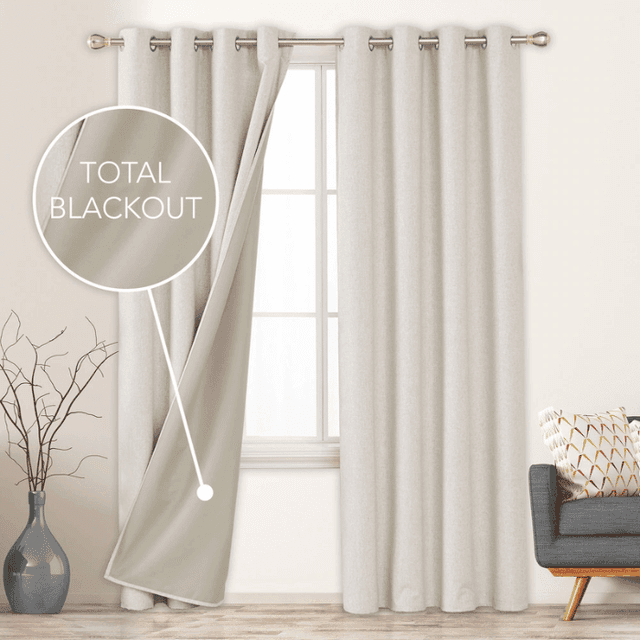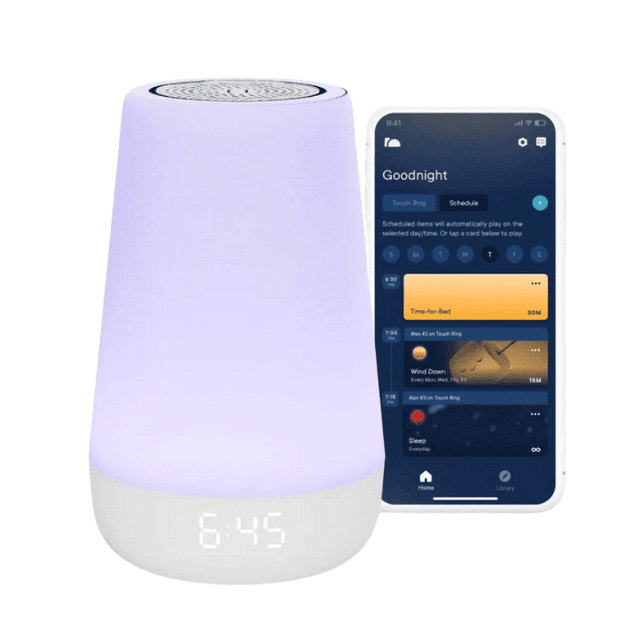What Is Sleepmaxxing? We're Breaking Down the Pros & Cons of this Viral Sleep Trend
Here’s Everything You Need To Know About Sleepmaxxing—the Benefits, the Science, and the Potential Pitfalls To Avoid

Time to say goodbye to tossing and turning! If you've been scrolling through wellness TikTok lately, you've probably seen the term "sleepmaxxing" everywhere. This is one internet “fad” we think is sticking around for the long run. It's a game-changer for your sleep quality, but like any wellness trend, it comes with some important caveats.
So what exactly is sleepmaxxing? Think of it as intense sleep optimization. We're talking about a science-backed approach that goes way beyond just "get eight hours of sleep." This method combines everything from room temperature tweaks to strategic nutrition timing to create your perfect sleep environment. But before you dive headfirst into this trend, we're breaking down both the incredible benefits and the potential risks you absolutely need to know.
All products and deals are sourced by the Rank & Style team using data and expert insights. If you shop through our links, we may earn a commission—at no extra cost to you.
The Science Behind Sleepmaxxing
Here's the thing—sleepmaxxing isn't just wellness influencers making stuff up. It's rooted in actual chronobiology and neuroscience research. Your brain produces hormones like melatonin and serotonin that control your sleep-wake cycle, and sleepmaxxing works by optimizing everything that affects these processes.
We're talking about your circadian rhythm, which is basically your body's internal clock. When you mess with factors like light exposure, meal timing, and stress levels, you're confusing this clock. Sleepmaxxing helps reset it using techniques that actually work, not just crossing your fingers and hoping for the best. Research shows that circadian rhythms are synchronized with environmental cycles and directly influence when we feel alert or sleepy throughout the day.
The coolest part? Scientists have found that foods rich in tryptophan, magnesium, and B vitamins can literally boost your body's natural melatonin production. No expensive supplements required (though we'll get to the supplement situation later—and trust us, it's complicated). Studies indicate that foods containing tryptophan, melatonin, and other sleep-promoting compounds can improve sleep quality naturally.
*Pro Tip:* If you struggle with maintaining a healthy diet, consider a meal kit or delivery plan. Brands like Factor or Blue Apron have options for special diets, making it easy to pick out delicious meals that are packed with nutritional value.
Nutrition and Lifestyle Hacks That Work
This is where the sleepmaxxing trend gets really interesting. What you eat and how you move can completely transform your sleep quality. These aren't just nice-to-haves, they're the secret weapons that make sleepmaxxing actually work.
Sleepmaxxing Nutrition & Timing
While a late night snack might be tempting, eating right before bed can have consequences when it comes to your sleep. When you eat a large meal right before bed, your digestive system has to work overtime to break down the food, which raises your core body temperature and keeps your body in an active state when it should be winding down for sleep.
Try to finish your last big meal at least three hours before bedtime, and consider sleep-promoting foods like kiwis, cherries, almonds, and leafy greens about an hour before bed. And as much as we love an afternoon latte, cutting off caffeine earlier in the day can have a major positive impact on your sleep quality.
Exercise and Screen Time for Better Sleepmaxxing Results
Exercise timing matters too. Morning or afternoon workouts are your best bet, finishing any intense exercise at least 4 hours before bedtime. And yes, we need to talk about screens. Blue light tricks your brain into thinking it's still daytime, so switch your phone over to night mode and start dimming lights about a few hours before bed. For the best results, create a phone-free bedroom policy.
For stress management, try the 4-7-8 breathing technique (breathe in for 4 counts, hold for 7, exhale for 8) or spend 5 minutes journaling before bed to quiet racing thoughts.
Sleep Hygiene That Actually Makes a Difference
You've probably heard about sleep hygiene a million times, but sleepmaxxing takes it to the next level. Here are the game-changing tactics that separate real sleepmaxxing from basic sleep advice.
Stick To Your Bedtime, Even on Weekends
Here's what actually moves the needle when you're sleepmaxxing: maintaining the same bedtime and wake-up time every single day, even on weekends. Yes, even when you want to sleep in on Saturday. Your circadian rhythm doesn't care that it's the weekend.
Optimal Temperature for Sleepmaxxing
Room temperature is huge too. Keep your bedroom between 65-68°F. It might feel chilly at first, but your body temperature naturally drops when you sleep, so a cooler room actually helps this process along. Scientific research confirms that most sleep experts recommend keeping the thermostat between 65 to 68 degrees Fahrenheit for optimal sleep quality. This temperature range works with your body's natural circadian temperature regulation, which involves core body temperature dropping during sleep phases.
Pair that with blackout curtains and a white noise machine, and you've created the perfect sleep sanctuary.
*Savings Alert:* Check out our Deals section for Brooklinen promo codes, Bed Bath & Beyond discounts,Target coupons, and Boll & Branch deals to help you get the best price on our recommended sleep products.
The Dark Side of Sleepmaxxing
While we're fans of better sleep, sleepmaxxing isn't all perfect nights and morning energy boosts. Like any wellness trend, there's a potential dark side that we can't ignore.
The biggest red flag? Sleep anxiety. When you become hyper-focused on optimizing every single aspect of your sleep, you might actually create more stress around bedtime. We've seen people obsessively checking their sleep trackers, panicking if their room temperature is off by a degree, or lying awake calculating how many hours they'll get if they fall asleep "right now."
Here's the truth—perfectionism and good sleep don't mix. If you find yourself more anxious about sleep than before you started sleepmaxxing, it's time to pump the brakes. Sleep should feel natural and restorative, not like a performance you're being graded on.
Red Flags to Watch Out For
Let's talk about when sleepmaxxing crosses the line from helpful to harmful.
These warning signs mean it's time to reassess your approach:
- Time obsession:
If you're spending more than 30 minutes thinking about or preparing for sleep each night, you might be overdoing it. A solid bedtime routine should feel calming, not like a complicated science experiment. - Social isolation:
Maintaining consistent sleep schedules is important, but if you're turning down every dinner invitation or skipping social events because they interfere with your bedtime, you've gone too far. Balance is key, and your mental health matters just as much as your sleep quality. - Ignoring your body:
If you're forcing yourself to stay awake because your tracker says you haven't hit your "optimal" bedtime, or lying in bed when you're clearly not tired, you're working against your body instead of with it. - Feeling worse:
If you're more tired, anxious, or moody after starting your sleepmaxxing routine, something isn't working. Good sleep should make you feel better, not worse.
The Supplement Situation (Proceed with Serious Caution)
Let's have an honest conversation about supplements. The sleepmaxxing community loves talking about melatonin, magnesium, and various sleep aids, but this is where things can get tricky fast.
Here's what most people don't realize: melatonin isn't just a harmless "natural" supplement. Taking too much can actually disrupt your body's natural melatonin production, leaving you dependent on supplements to fall asleep. The timing matters too. Taking it at the wrong time can shift your circadian rhythm in ways you didn't intend.
Our honest recommendation? Start with the food-based approaches we mentioned earlier. If you're still struggling after giving those a solid try, talk to a healthcare provider before adding any supplements to your routine. Remember, supplements aren't regulated the same way medications are, so quality and dosing can vary wildly between brands.
How to Sleepmax Safely
The safest way to approach sleepmaxxing is to think of it as sleep optimization, not sleep perfectionism.
Here's how to get the benefits without the risks:
- Start slow:
Change one thing at a time. Pick one element—maybe consistent bedtimes or cutting off caffeine earlier—and stick with it for at least two weeks before adding something new. - Listen to your body over your tracker:
Sleep data can be helpful, but it shouldn't override how you actually feel. If your tracker says you had "poor" sleep but you woke up feeling refreshed, trust your experience. - Build in flexibility:
Life happens—late work deadlines, social events, travel. A sustainable sleep routine needs to accommodate real life. Aim for consistency 80% of the time and give yourself permission to be human the other 20%. - Set boundaries with sleep content:
It's easy to fall down rabbit holes of sleep optimization articles and social media content. Limit yourself to checking sleep-related information once or twice a week, not daily.
When to Talk to a Professional
Here's something the sleepmaxxing community doesn't talk about enough: sometimes sleep issues require professional help, not just lifestyle changes. If you've been struggling with sleep for more than a few weeks despite trying various techniques, it might be time to consult a healthcare provider.
Sleep disorders like sleep apnea, restless leg syndrome, or circadian rhythm disorders require proper diagnosis and treatment. No amount of room temperature tweaking will solve these problems—and trying to DIY your way through them could actually delay getting the help you need.
Mental health considerations are huge too. If anxiety, depression, or other challenges are affecting your sleep, addressing those root causes with a professional is often more effective than trying to optimize your way around them
How to Start Your Sleepmaxxing Journey
Ready to dive in? We recommend starting with just 2-3 changes and building from there. Trying to overhaul your entire routine overnight is a recipe for burnout.
Begin by tracking your current sleep patterns for a week or two. Note when you go to bed, when you actually fall asleep, how many times you wake up, and how you feel in the morning. This baseline data will help you identify the biggest opportunities for improvement.
Next, pick the changes that feel most doable for your lifestyle. Maybe that's establishing a consistent bedtime, swapping your evening coffee for herbal tea, or investing in blackout curtains. Small changes can lead to surprisingly big improvements.
Remember, it typically takes 4-6 weeks to see significant changes in sleep quality, so be patient with yourself. Your body needs time to adjust to new routines, but the payoff—better energy, improved mood, sharper focus—is absolutely worth it.
The Bottom Line on Sleepmaxxing
Sleepmaxxing can be an incredible tool for transforming your sleep quality using science-backed strategies. By optimizing everything from your evening routine to your bedroom environment, you can finally get the restorative sleep your body needs. But—and this is a big but—it's not a cure-all, and it's definitely possible to take it too far.
The key is finding balance. Start small, be consistent, listen to your body, and don't let perfect become the enemy of good. Better sleep is absolutely achievable, and you don't have to sacrifice your sanity (or your social life) to get there. Sweet dreams are definitely within reach, you just need the right strategy and a healthy dose of realistic expectations.











